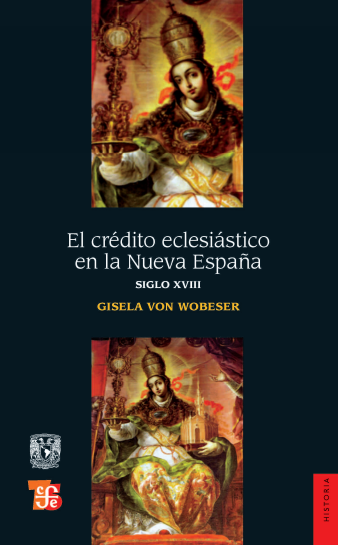
Libraries
Libraries
Ecclesiastical credit in New Spain, eighteenth century
The Novohispana Society made extensive use of credit. The ladies of the high society paid for the manufacture of their dresses in installments, the miners obtained advances from the merchants to exploit the mines, the stores of the towns supplied goods on credit, the workers of the haciendas and obrajes received supplies at the expense of their salaries, the novices paid their dowry with a mortgage on their parents’ property, and even pious donations were often made by borrowing. In El crédito eclesiástico en la Nueva España during the eithteenth century Gisela von Wobeser analyzes the performance of ecclesiastical and mercantile credit in the eighteenth century which were the main source of credit in Nueva España. Through a solid work based on archive research, primarily in the Archivo General de la Nación, and supported by an extensive bibliography, the reader is introduced to the subject on the following themes: the origin of capital, the main lenders and borrowers, credit mechanisms and the social purpose, and, the function of ecclesiastical credit. The author also provides valuable elements to understand the economic reality of a society in which from the king to the farmer, they all borrow.

